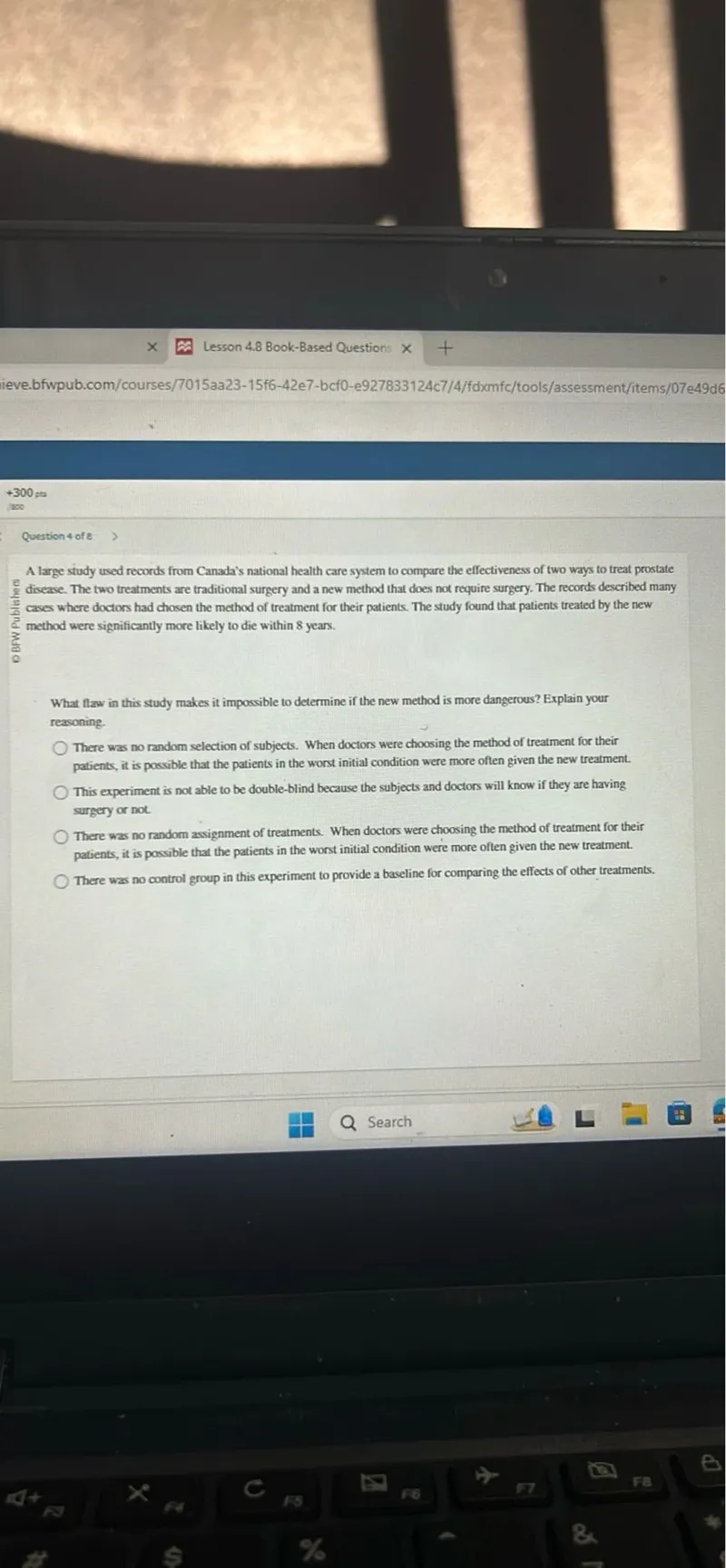Questions: A large study used records from Canada's national health care system to compare the effectiveness of two ways to treat prostate disease. The two treatments are traditional surgery and a new method that does not require surgery. The records described many cases where doctors had chosen the method of treatment for their patients. The study found that patients treated by the new method were significantly more likely to die within 8 years. What flaw in this study makes it impossible to determine if the new method is more dangerous? Explain your reasoning.

Transcript text: A large study used records from Canada's national health care system to compare the effectiveness of two ways to treat prostate disease. The two treatments are traditional surgery and a new method that does not require surgery. The records described many cases where doctors had chosen the method of treatment for their patients. The study found that patients treated by the new method were significantly more likely to die within 8 years.
What flaw in this study makes it impossible to determine if the new method is more dangerous? Explain your reasoning.





